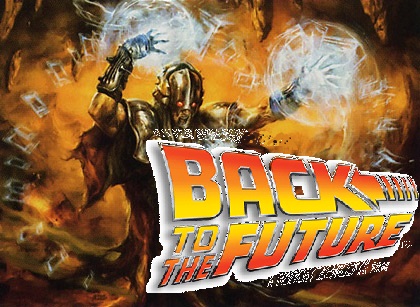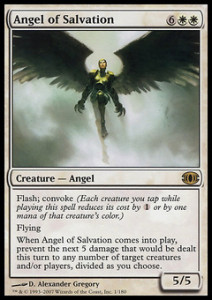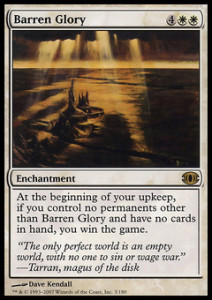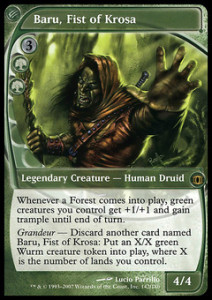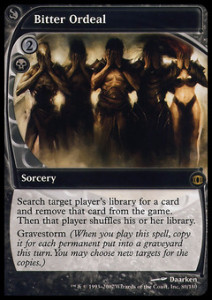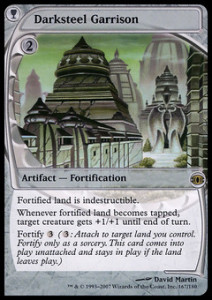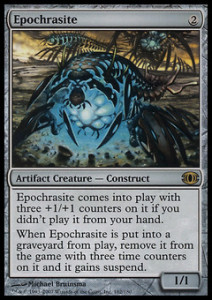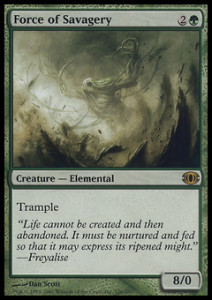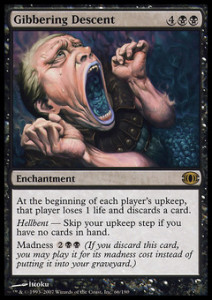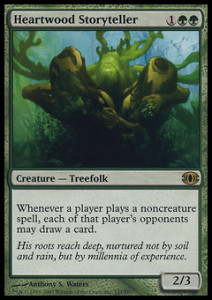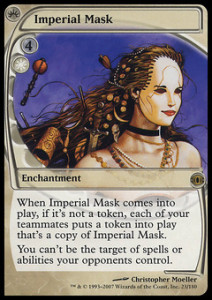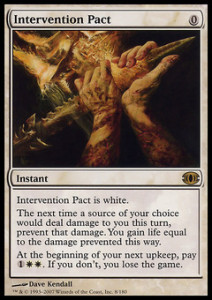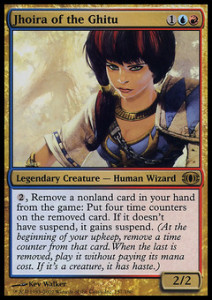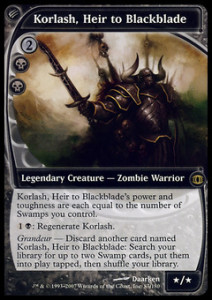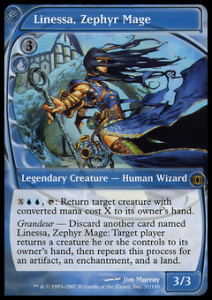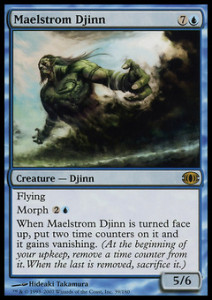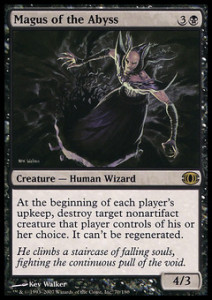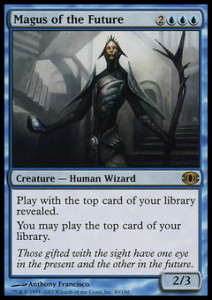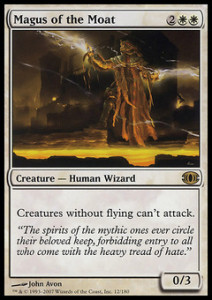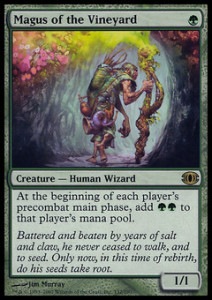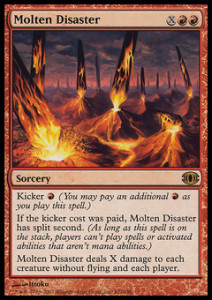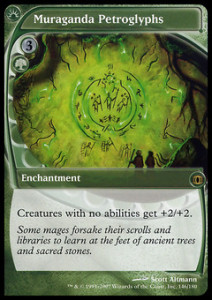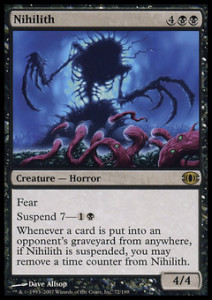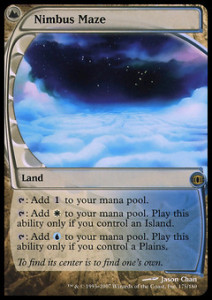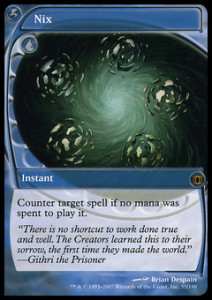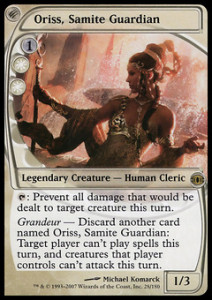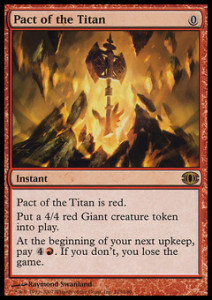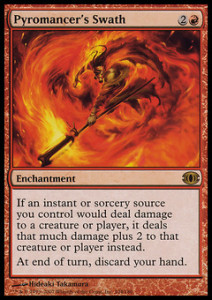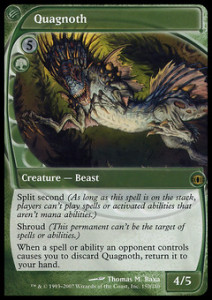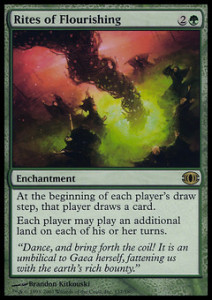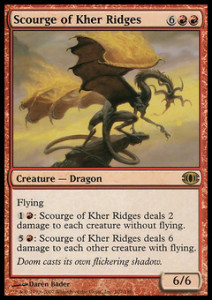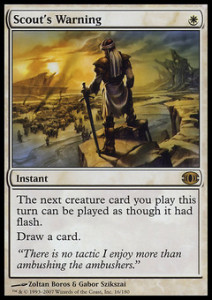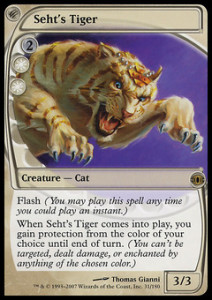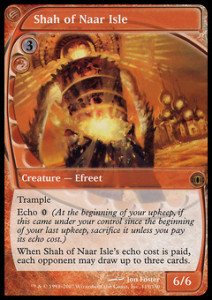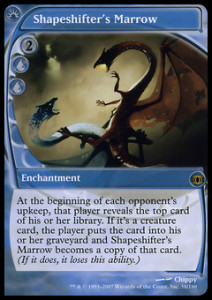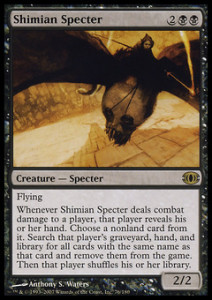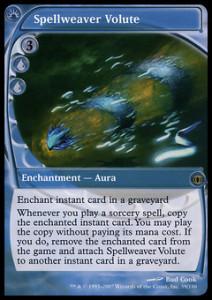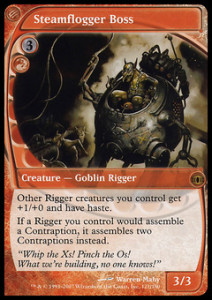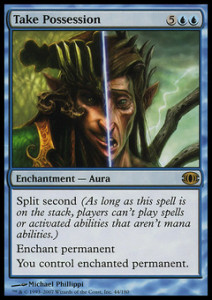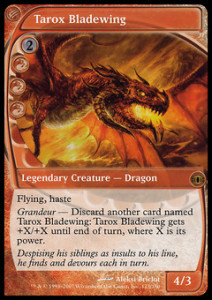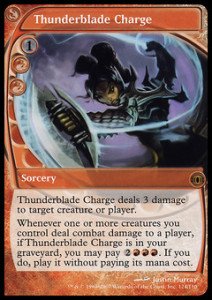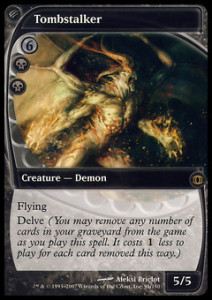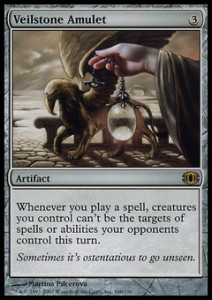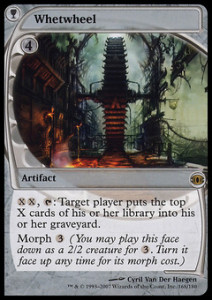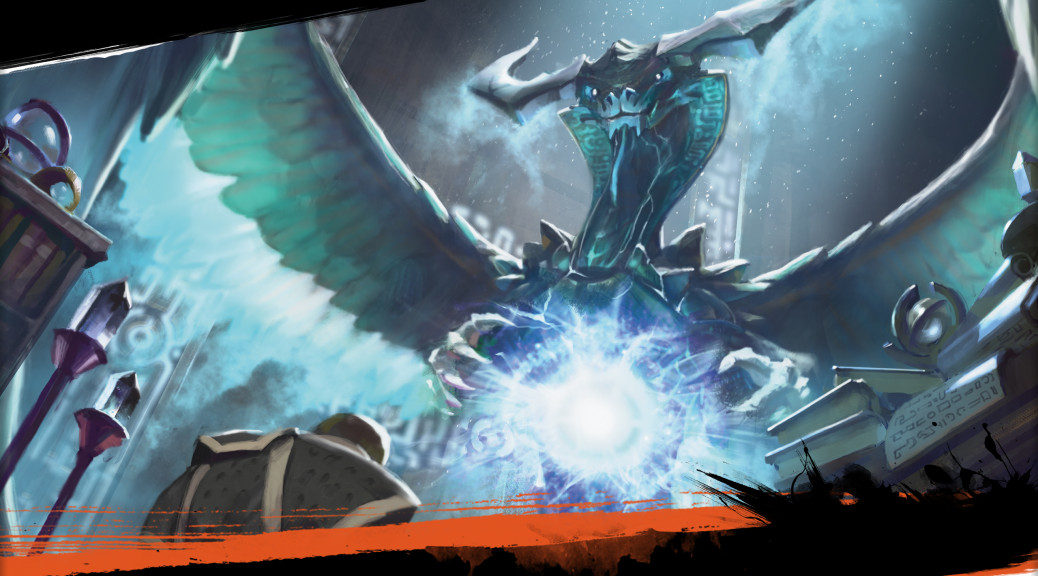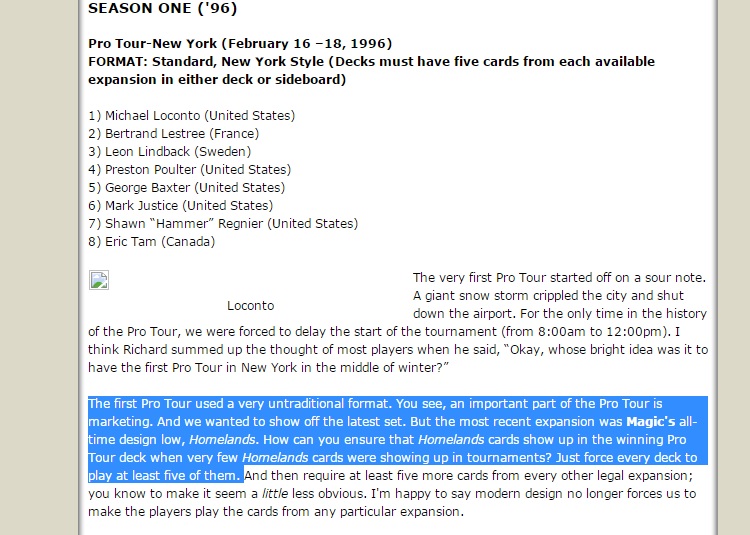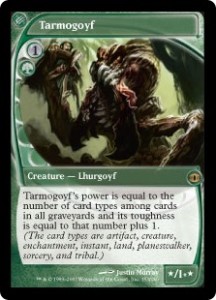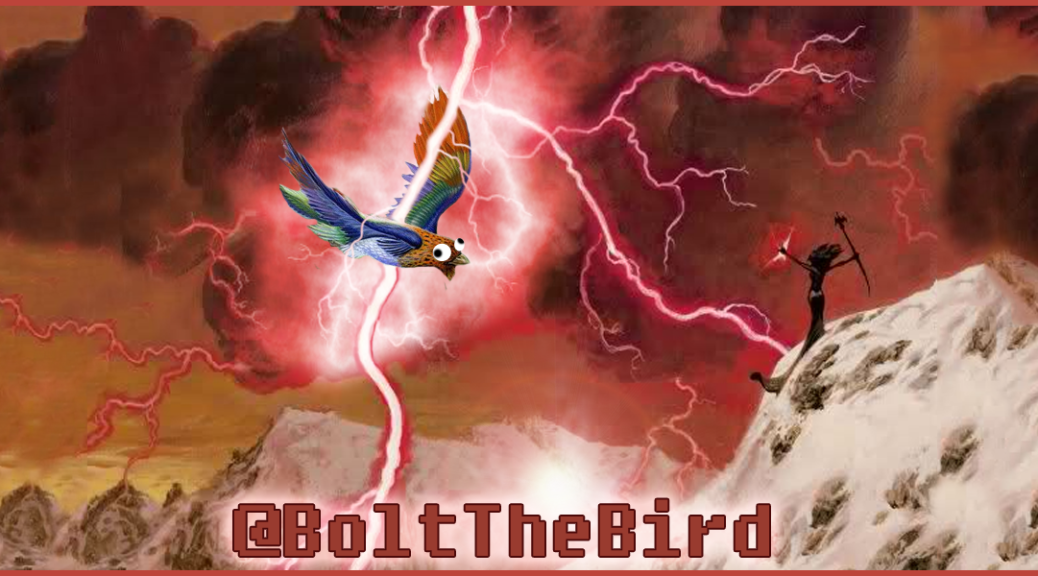Welcome back! Go ahead and pull out last week’s homework when you sit down, and we are gonna go over it together once the bell rings. Oh, and if you have the signed parent forms and check for the field trip, I’ll take those, too.
So last week, I asked you to compare some of the more expensive cards from Avacyn Restored and Rise of the Eldrazi with new cards from Dragons of Tarkir. Now, my findings are not the full extent of this exercise, nor are they likely all correct. This is not a binary “right or wrong” question, but more of an exploratory practice to grow your own skills.
Give a man a fish, and he’ll eat for a day. Teach a man to fish, and he’ll make money buying and selling Magic cards on the Internet. Uh, or something.
–Ross Lennon
The first thing I looked at were lands. None of these three sets had a cycle of rare lands that produced colored mana—but all three did have a marquee rare land1 (Eldrazi Temple, Cavern of Souls, and Haven of the Spirit Dragon). Cavern of Souls is clearly the most versatile of the three, and it’s priced accordingly (remember, this is a card that even sees some play in Vintage), but Haven certainly has real-world applications. Like Temple, it slots in with a very popular creature type, and presents a very low opportunity cost for deck-builders in EDH. Both have the opportunity to get better over time (as more Eldrazi/Dragons are printed), but Haven also benefits from future forms of Ugin. Foils are likely the safest, but at $8, I may be tempted to wait a while.
All three sets contain above-average mono-red cards at mythic: Vexing Devil, Kargan Dragonlord, and Dragon Whisperer. This is most likely just a coincidence, although Zurgo is in DTK also. All four of the cards I just mentioned are Cube and Modern-worthy playables, though.
The majority of the value of the older two sets is tied up in mythics. If any of the marquee mythics (the elder dragons, primarily) tank at rotation, I would consider them a decent long-term option.
Did you see something I didn’t? Let me know in the comment section!
Turn In Your Papers—It’s Time for This Week’s Lesson
This week, we are going to do a little something different. Magic sets all have different values determined by the cumulative values of all of the cards in a given set. This value is most often assessed immediately upon release, even though that value is guaranteed to change over time. Some sets have the majority of their value tied up in a single card, like Dragon’s Maze, while other sets are full of expensive cards. The print run also plays a factor here, which is why Alpha and Beta are the two highest ranked sets in terms of overall value. Before we get too far into this, let me show you the formulas we will be working with:
FOR SETS WITH MYTHIC RARES:
(2R + 1M)/X
R = Combined value of all Rares in set
M = Combined value of all Mythics in set
X = Combined amount of mythics and twice number of all rares printed in set
FOR SETS WITHOUT MYTHIC RARES:
R/X
R = Combined value of all Rares in set
X = Amount of rares printed in set
These formulas may look familiar to you if you have an SCG Premium account, as they are the same that Ben uses for his preview articles. I hereby give him credit, although these formulas have existed for a very long time. You should write them down somewhere if you haven’t already. We are going to use these when we evaluate sets in the future, so expect to see them fairly often moving forward.
So anyway, as I was saying, obviously sets like Alpha and Beta occupy the top spots when you use these formulas to rank sets. But which Modern-era set has the highest value? The answer, of course, is Future Sight2.
Using some rough estimates based on TCGplayer median prices, we get a combined set value of around $514. The set had 60 rares. Our formula tells us that the “average” Future Sight rare (and therefore booster pack) is therefore worth about $8.5. It is important to mention, however, that there is one giant, green, $200 outlier in this set, and its name is Tarmogoyf. Removing it from the equation drops the value to just over $5.25.
I cannot stress enough how important it is to always open a Tarmogoyf in a booster pack if at all possible.
–Ross Lennon
Future Sight, however, is more than just the Tarmogoyf lottery. The set was special in the sense that it precedes New World Order and the current era of design philosophy, and also features a ton of crazy cards that were designed to be unique. There are a lot of very good cards in this set. As a result, this set was very difficult to balance internally, and a lot of otherwise questionable effects got printed for the sake of being new and wild (hi, Bridge From Below!). Most of these cards (at rare, at least) have had some sort of Constructed-level impact, and have seen their prices develop accordingly. One of the important things to realize about Future Sight is that it’s “pre-mythic,” so every rare in the set is roughly as rare as ‘Goyf3. That’s a whole heap of potential.
I want to go through all of the low-end rares in Future Sight and see if we can find any diamonds in the temporal aether. Normally, I would say that I would do any card that is less than the price of a booster, but boosters of this set are… not $3. So we will stick to things that are largely $5 or under, but if I see any worthwhile exceptions, I’ll let you know.
Angel of Salvation: Even before being reprinted, this card was not very popular. Foils are under $5, which is the only foil version currently available. The card isn’t great, but it’s a rare angel and the foils have room to go nuts.
Remember, if angel collectors only cared about their cards being good, they wouldn’t be collecting angels. #HotTake
–Ross Lennon
Barren Glory: High ho, the dairy-o, The Cheese Stands Alone! And it’s obvious why. The best thing you can do with this card is get someone to draw Stinky Cheese Man on it—actually, that would be pretty cool. Foils are only about a buck, so I feel like that can’t be the worst way to spend a dollar.
Baru, Fist of Krosa: I actually think the grandeur legends would be pretty cool commanders, except that their best ability is literally blank in the format. Again, the foils are worth less than a pack of Fate Reforged, and the potential is infinitely higher. I don’t expect to see any of these guys again. Baru is competing with a slew of strong mono-green generals, however, and is probably never going to make the leap.
Bitter Ordeal: So this is the first card that’s above a dollar! It’s worth five of them! I’m not even sure where this sees play anymore—it’s definitely one of the weirdest cards in the set. I don’t think we will ever see enough demand for worse versions of Haunting Echoes and Cranial Extraction that this card ever surges past its current price. It’s a sorcery, which limits the upside a lot.
Darksteel Garrison: This card is really cool and evocative. Sadly, it’s only playable in Magic: The Gathering, which really doesn’t have a use for it right now. I’m starting to sound like a broken record, but the foils seem very cheap. I’m sure there’s a Commander deck that wouldn’t mind keeping its Eye of Ugin or something alive.
Epochrasite: Reprinted in MM1 (at uncommon!) and in Commander 2014. If every deck on Earth wanted four copies, that might be enough demand to pull it up over a dollar.
Force of Savagery: It… uhh… triggers Experiment One? This card has always been a trap for novice green mages, and there are so many better things you can do. I’d rather not make money off of these down the road than spend a dollar a piece on them. I have my pride.
Gibbering Descent: This is a black enchantment that costs six (or four) and doesn’t win you the game. Oh, and it’s better if you have no cards in hand! Necrogen Mists and Bottomless Pit are both much better, and Braids isn’t even a legal commander.
Heartwood Storyteller: The foils are roughly seven times the value of the non-foils. There’s potential, but it’s largely a Commander or Cube card, so they’re going to move much slower. It’s also only good in a small selection of decks, which limits potential. If you want some, get them in trade.
Imperial Mask: You know, there was a period of time when WOTC was really pushing Two-Headed Giant. I wouldn’t mind snatching up a couple of foils if they present themselves.
Intervention Pact: The range of quality in this cycle financially goes from bulk to more than $20. This is definitely the worst of the cycle, but it doesn’t target, and it requires double white to cast, so it’s always an option for Hive Mind. That doesn’t make it a smart buy, though.
Jhoira of the Ghitu: Reprinted in MM1 and competing with a couple other RU commanders. Foils are already $20, so pass.
Korlash, Heir to Blackblade: My heart breaks for this guy. He was actually pretty good in Standard for a little while! I’d play him in Commander. I still care about you, buddy. (Don’t waste your money buying any more than you want to play with, though—no potential here.)
Linessa, Zephyr Mage: Mono-blue commanders are largely formalities. Don’t expect to get much out of this card.
Maelstrom Djinn: Don’t make Fat Mhoti worse and expect people to pay more for it. That’s not how this works. Just take a second, compare this card on face to Delver of Secrets. Pass.
Magus of the Abyss: This is certainly the kind of card I could get behind. It’s good, but very fair for Commander. May be worth trading for a couple of foil copies, just because this feels like it could be in a Commander deck at some point.
Magus of the Future: I keep expecting to wake up someday and see these are super expensive, but it could also be in a pre-constructed deck at any point. There is a big spread between foils and non-foils, so there’s potential, but I’m not willing to stick my neck out on this one. If anything, this makes me like the other magi foils better.
Magus of the Moat: So turns out that resilience to Lightning Bolt costs about $397. I’m not crazy about these where they are, and this card is not Modern-viable. Pass.
Magus of the Vineyard: I won’t pretend to know enough about Tiny Leaders to say where this fits in that panoply. This could potentially fit in a number of formats, and I wouldn’t disapprove of trading for a couple of foils. I wouldn’t want to commit too much cash to getting them, though.
Molten Disaster: Reprinted and not very good. Pass.
Muraganda Petroglyphs: This is a card that encourages playing bad cards, costs four mana, and doesn’t even keep Force of Savagery alive. The flavor is neat, but if I found some of these in my closet, I would be thrilled to get more than a quarter for them.
Nihilith: This is the kind of card that I like in Cube. That’s why the foils are worth $2 and the non-foils are largely worthless. Not a viable spec target, but I’m going to go add one to my cube.
Nimbus Maze: This card took off right before Theros and hasn’t come back down. This is the type of cycle that I could see being printed someday, but is likely better in some of the other color combinations. If this card gets reprinted, I can see these actually holding or slightly increasing, because people might like the cool frame. That’s a small audience though.
Nix: This effect is largely not worth a card in your deck. If Bloodbraid Elf gets unbanned, I could see this price going up as a knee-jerk reaction, but the price will crater back down quickly. If there is any kind of spike, get rid of any copies you have immediately.
Oriss, Samite Guardian: Of this cycle, Oriss has the worst regular ability and probably the best granduer one (tied with Korlash). Pass.
Pact of the Titan: Like Intervention Pact, it’s good, but only in one deck. Also has been reprinted.
Pyromancer’s Swath: A trap and a reprint.
Quagnoth: This card exists only to make people think for a brief second that they opened a Tarmogoyf and then quickly break their hearts. I vehemently hate this card. It is also very bad and dumb.
Rites of Flourishing: Reprinted in M12, and very fair. The only demand is in singleton formats, so there’s more than enough supply.
Scourge of Kher Ridges: See my comments on Angel of Salvation, but replace “angel” with “dragon.” I never want to be in a situation where I cast this card.
Scout’s Warning: Did you know you can crack a Black Lotus on your opponent’s turn and cast this and Serra Avenger? If that’s your idea of fun, then buy these to your heart’s content, but you should probably look for a different hobby.
Seht’s Tiger: A 3/3 for four at instant speed with a worse Angel’s Grace attached. It has its uses, but they are not strong enough to inspire financial upside.
Shah of Naar Isle: This card lets your opponent draw three cards.
Shapeshifter’s Marrow: This is neat, but swingy and risky. I think I want to own one foil copy, but that’s it.
Shimian Specter: My brain is falling asleep.
Spellweaver Volute: Zzzzz…
Steamflogger Boss: Don’t. Just don’t. WOTC knows this won’t happen, but nobody at the company has the heart to tell you.
Take Possession: This was also reprinted as an uncommon.
Tarox Bladewing: This is worse than Oriss.
Thunderblade Charge: This is worse than Hammer of Bogardan.
Tombstalker: This is the safer version of Tarmogoyf. It has a price history that has been as high as $10, has evasion, is good in a lot of different types of decks, and is still respectable in Legacy. It was reprinted in MM1, and is the kind of card that I could see WOTC printing one or two more times, just because it is the kind of broken threat they want us playing with (as opposed to Griselbrand or Emrakul). It’s good in the mono-black Legacy decks that lots of players new to the format typically play at least once. It’s definitely worth owning a set.
Veilstone Amulet: Oh sweet, hexproof: everyone’s favorite mechanic. I could see this card being good in Tiny Leaders, since there are fewer board wipes in the format. I’m still going to pass, but I won’t think less of you for buying in.
Whetwheel: Of all the ways to kill someone with infinite mana, this is technically one of them.
That’s It
So we didn’t find very much. There are a few things with niche potential, but this was also an important exercise to demonstrate. Magic finance has gotten to a point where there are very few hidden gems left, so it’s worth doing a detailed analysis of sets with opportunity.
Thanks as always for joining me, and I’ll see you here next week.
Best,
Ross
BONUS!
Here is the formula breakdown for Modern Masters, which actually has a higher value than Future Sight (but wasn’t ever a Standard-legal set).
Combined value of rares: 371.25 (x2 = 742.5)
Combined value of mythics: 537.75
Total number of rares in the set (x2) plus the number of mythics: 121
The average price of the rare slot: 10.58
The average price of the rare slot (excluding Tarmogoyf): 9.00
Even with Tarmogoyf, the rare slot is only about half the price of the market value of an MM1 pack. Of course, the guaranteed foil slot is nice, but it’s too risky to predict.
1 Avacyn Restored also had the last three pieces of the Innistrad block rare land cycle (Desolate Lighthouse, et al), but those don’t really matter here since there is no parallel between the other two sets.
2 As in, the set that was standard legal. Don’t worry, we’ll get to you-know-what soon.
3 Impossible to say without seeing the sheets, but it’s close enough.
